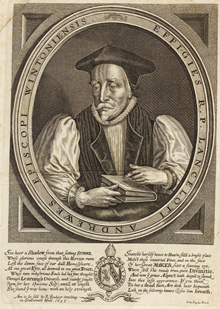Towards 1611
Richard Bancroft, Archbishop of Canterbury, was at first hostile to a project to create a new translation, but took the lead in the face of James’s strong desire for it. The new Bible was to be ‘one uniforme translation … by the best learned of both the Universities … reviewed by the Bishops, and the chief learned of the Church … presented to the Privy Council … ratified by royal authority … read in the whole Church, and no other.’ Bancroft wrote many urgent letters to the vice-chancellors and scholars to set to work in their companies without delay. He sent ‘rules to be observed’, written in his own hand, to Cambridge. Lancelot Andrewes was in charge of the first Westminster company, while his brother Roger was in the first Cambridge company alongside Laurence Chaderton, Master of Emmanuel. They were to translate the Old Testament from 1 Chronicles to Ecclesiastes. The second Cambridge company, led by Andrew Downes and including John Bois and Samuel Ward, were to translate part of the Apocrypha. Very little evidence survives of the process from commissioning to publication. The companies accomplished their task, and the King James Bible was published sometime in 1611, the exact date, price and print-run all unknown.


